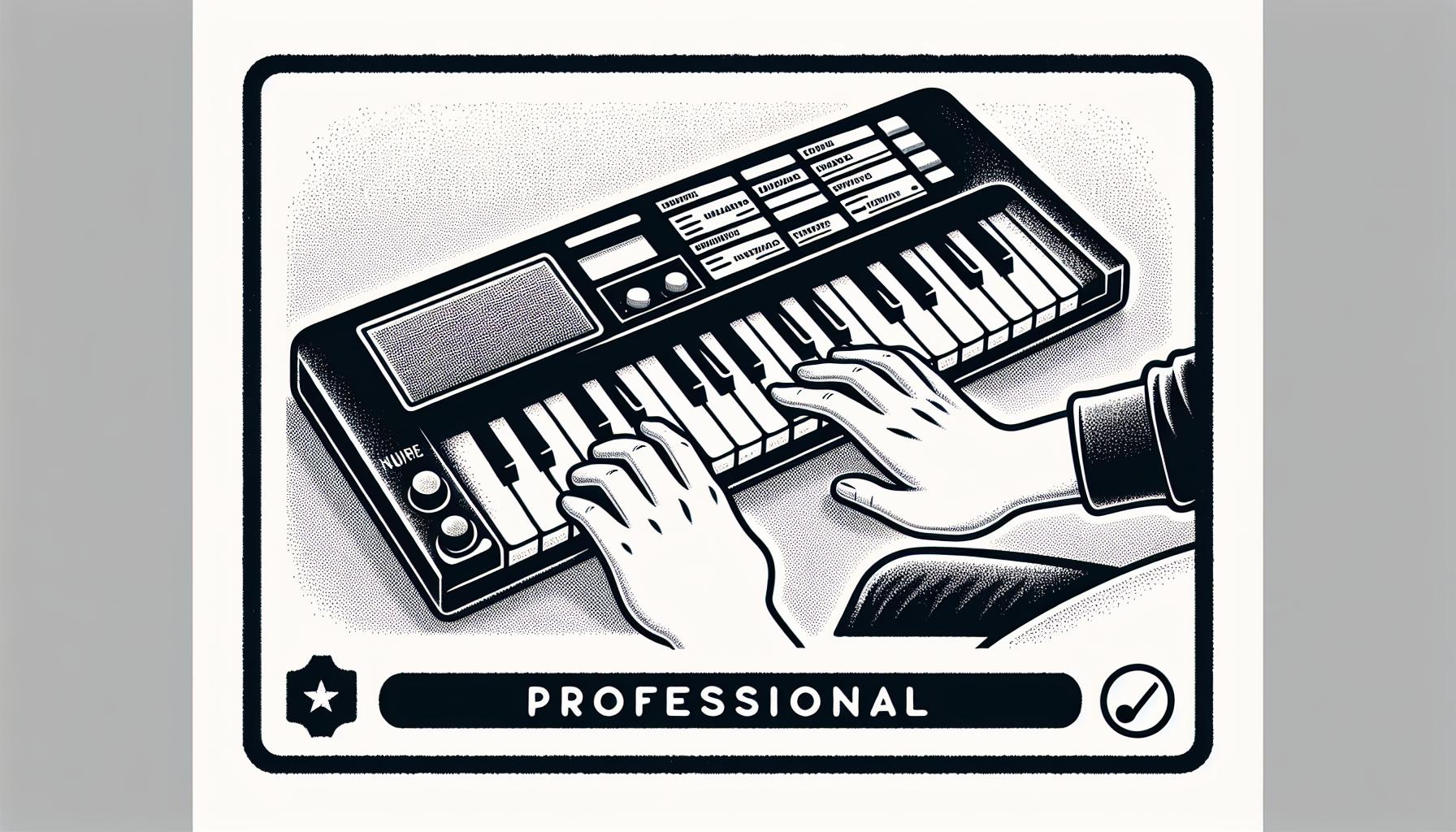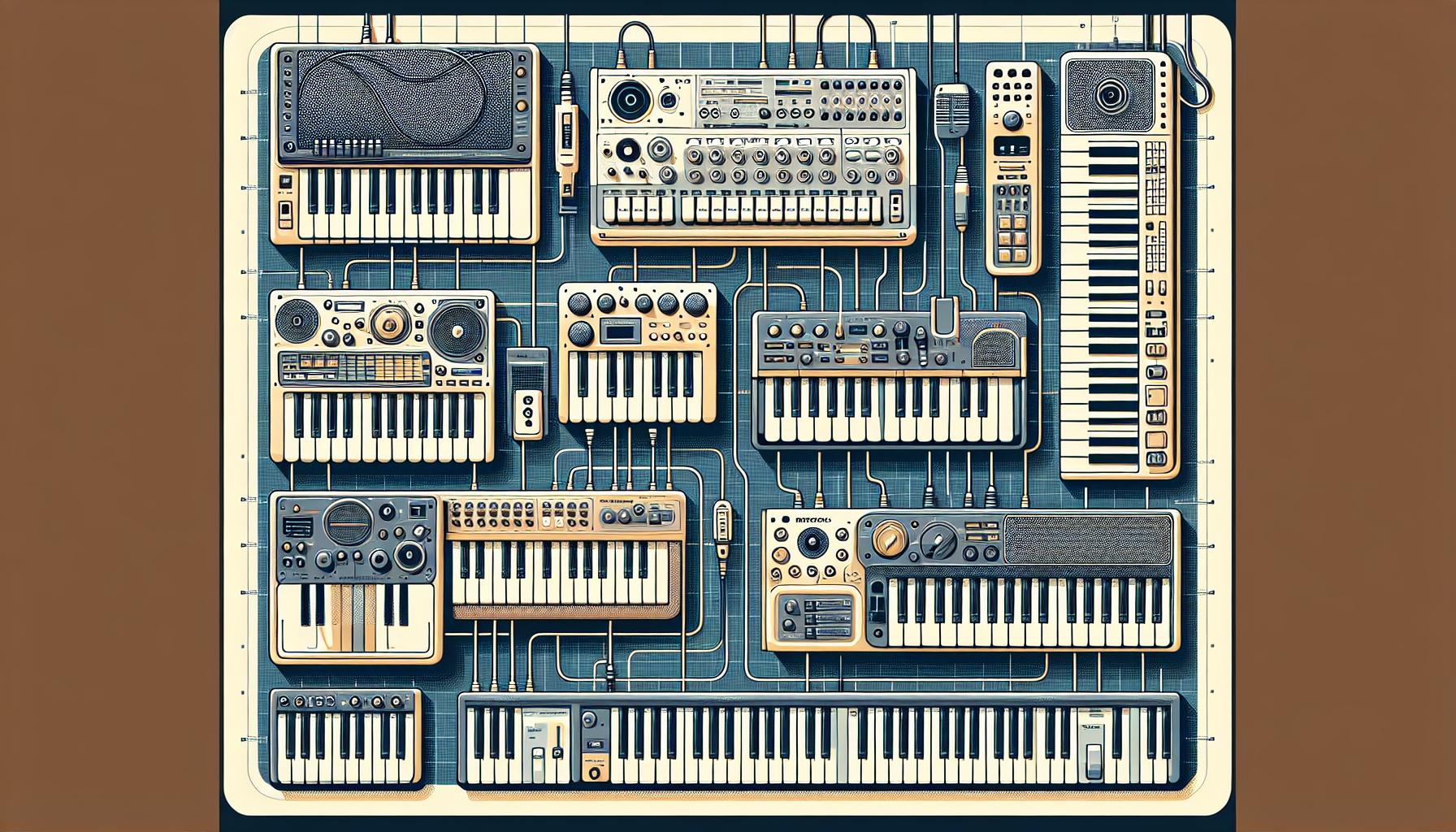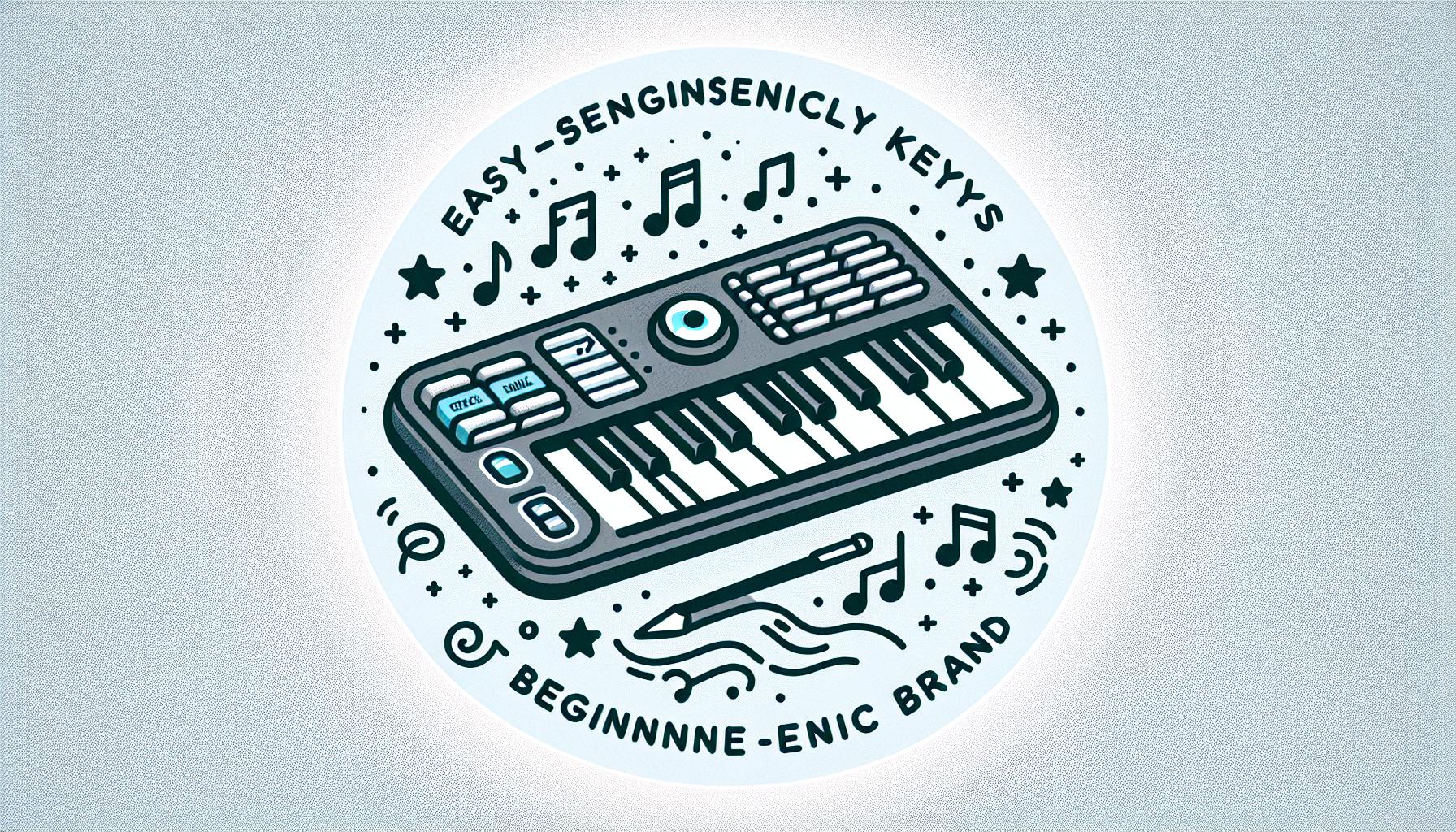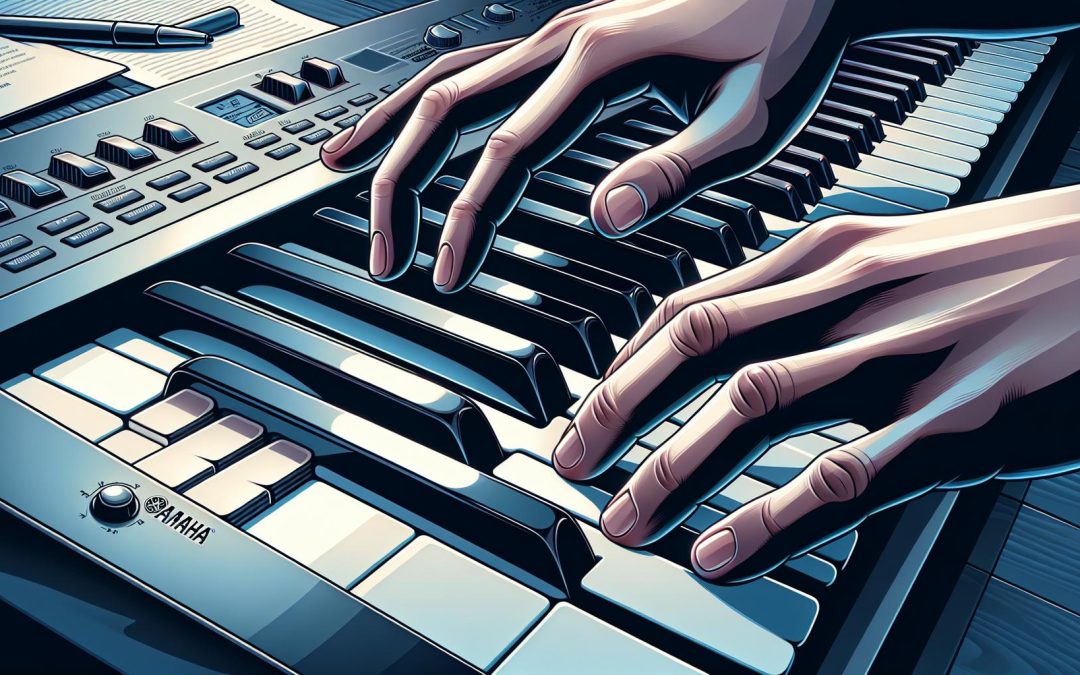Stepping into the world of music can be as thrilling as it is daunting, especially when it comes to choosing the right instrument. For beginners, finding that perfect keyboard that balances quality, features, and affordability is key. Yamaha, a brand synonymous with excellence in music, offers a range of keyboards that fit the bill perfectly for novices.
Navigating through Yamaha's lineup, one might wonder which keyboard stands out as the best budget option for beginners. It's not just about hitting the right notes; it's about starting a musical journey with confidence. Let's dive into the world of Yamaha keyboards, where quality meets affordability, ensuring every beginner starts on the right key.
Understanding Yamaha Keyboards
Yamaha, a company revered for its musical excellence, offers a diverse range of keyboards designed to cater to musicians at every skill level. For beginners, navigating the vast selection of Yamaha keyboards can initially seem daunting. However, understanding a few key aspects can make the selection process much smoother and more rewarding.
At the core, Yamaha keyboards are celebrated for their rich sound quality and durability. These instruments are built to last, ensuring that novices can explore their musical journey without fretting over frequent replacements or repairs. Yamaha's commitment to quality is evident in even their most budget-friendly models, which boast features that are designed to aid learning and spark creativity.
When considering a Yamaha keyboard, beginners should pay particular attention to:
- Key Count: Most Yamaha keyboards come with either 61, 76, or 88 keys. Beginners might find a 61-key keyboard sufficient to start, but an 88-key model emulates the full range of a traditional piano, offering a more comprehensive learning experience.
- Touch Sensitivity: This feature allows the volume of the note to change based on how hard the key is pressed, mirroring the dynamics of an acoustic piano. It's a crucial feature for those seeking to develop expressive playing skills.
- Built-in Learning Tools: Yamaha keyboards often include features like built-in lessons, a metronome, and song libraries which can significantly enhance practice sessions. Some models also offer connectivity to smartphone apps for interactive learning experiences.
- Sound Quality and Variety: Even on a budget, Yamaha keyboards offer excellent sound quality. They also provide a range of voices and rhythms that allow beginners to experiment across various musical styles.
Affordability Without Compromise
Finding a keyboard that balances cost and quality is essential for beginners. Yamaha has managed to incorporate advanced features into their budget-friendly models, ensuring that price doesn't deter anyone from pursuing their passion for music. This inclusivity has made Yamaha a favored brand among aspiring musicians.
- Yamaha PSR-E273: This is an ideal starting point for novices. It offers 61 keys, 400 voices, and 130 auto accompaniment styles. It also comes with a quiz mode to make learning fun and engaging.
- Yamaha YPT-260: Similar to the PSR
Key Features to Consider for Beginners

When embarking on a musical journey, beginners might find the vast array of Yamaha keyboards a bit overwhelming. However, understanding specific key features can significantly simplify this choice. Yamaha, known for its quality instruments, offers several features tailored to support and enhance the learning process for novices.
Key Count and Size matter greatly for beginners. A standard piano has 88 keys, but beginners might not need all of them. A keyboard with 61 to 76 keys is often more than sufficient for those just starting out. The keys should also be full-sized to ensure an easy transition to an acoustic piano in the future.
Touch Sensitivity is an essential feature that allows the volume of the sound to change depending on how hard or soft the keys are pressed, mimicking the dynamics of an acoustic piano. This feature can greatly influence expression in playing, making it crucial for developing a beginner's musical ear and technique.
Built-In Learning Tools can be particularly beneficial for self-learners. Features such as built-in songs, lesson modes, and light-up keys guide novices through the basics, allowing them to practice and improve even without a teacher present. Yamaha keyboards often come equipped with various educational features that make learning both effective and fun.
Sound Quality is not to be overlooked. High-quality sounds can greatly motivate beginners by making their practice sessions more enjoyable and rewarding. Yamaha keyboards are renowned for their exceptional sound quality, thanks to their advanced sampling technology. This ensures that even entry-level models produce rich and authentic sounds that closely mimic an acoustic piano.
Budget-friendly Yamaha keyboards, like the PSR-E273 and YPT-260, come packed with these features, ensuring that beginners don't have to compromise on quality for affordability. They strike an excellent balance, offering an impressive array of functions that cater well to beginner needs without overwhelming them.
| Feature | PSR-E273 | YPT-260 |
|---|---|---|
| Key Count | 61 | 61 |
| Touch Sensitivity | No | Yes |
| Built-In Learning Tools | Yes | Yes |
| Sound Quality | High | High |
These keyboards also offer a variety of sounds and rhythms that can keep practice interesting and inspire creativity in beginners. The variety encourages exploration and experimentation, key components in developing musicality and a love for playing.
Top Picks for Best Budget Yamaha Keyboards

When embarking on the journey of learning keyboard, finding the right instrument that blends quality with affordability is crucial. Yamaha, a brand synonymous with musical excellence, offers several models that stand out for beginners who are mindful of their budgets.
The PSR-E273 and YPT-260 have already been mentioned for their balance of features and affordability. However, there are other models in the Yamaha lineup that deserve attention. The PSR-E363 and PSR-EW300 are two such keyboards that cater to the budding musician with features that go a step beyond the basics, without stretching the budget too thin.
The PSR-E363 offers a dynamic and expressive touch with 61 touch-sensitive keys, making it a perfect step up for beginners ready to experience a more realistic playing feel. It's packed with 574 voices, including grand pianos, guitars, and brass, ensuring that learners have a wide range of sounds to explore and play with. Moreover, its duo mode function allows the keyboard to be split into two halves, essentially enabling two players to play in the same octave at the same time - a fantastic feature for lessons or duets.
On the other hand, the PSR-EW300 brings something slightly different to the table with its 76 keys, offering a broader range and more room for musical growth. Like the PSR-E363, it includes touch-sensitive keys and a plethora of voices - 574 in total. Additionally, it boasts an impressive 165 auto-accompaniment styles that provide beginners with full-band backing tracks, based on the chords they play. This feature is invaluable for developing timing and playing in various musical styles.
For those focused on enhancing their playing technique and reading music, both models come with Yamaha's Education Suite. This built-in feature offers practice and learning tools, such as listening, timing, and waiting exercises that can cater to the pace of learner progress.
Another noteworthy mention is the Yamaha PSR-F51. Simple and user-friendly, the PSR-F51 is designed for absolute beginners. It includes 61 keys and offers 120 voices and 114 rhythms, covering a broad spectrum of music styles. Its main selling point is its ease of use, with a straightforward interface and a focus on getting beginners playing right away.
Here's a quick comparison of the top picks:
|
Comparison of Budget Yamaha Keyboards

When venturing into the world of music with a Yamaha keyboard, beginners have several budget-friendly options to choose from. Each model offers different features tailored to various needs, making it crucial to compare them to find the best fit.
PSR-E273
The Yamaha PSR-E273 stands out as an excellent entry point for novices. It's praised for its simplicity and the variety it offers. With 61 non-weighted keys, it's designed to make the initial learning phase as smooth as possible. 400 high-quality voices and 130 auto-accompaniment styles fuel creativity and make practice sessions engaging. It's also equipped with the Yamaha Education Suite (YES), offering built-in lessons that progress with the learner.
PSR-E363
Moving up slightly in functionality and price, the PSR-E363 presents itself as a versatile option for those seeking more from their instrument. What distinguishes this model is its 61 touch-sensitive keys, offering a more expressive playing experience as it responds to the force of touch. With 574 voices and 165 styles, it significantly broadens musical possibilities. It also incorporates the YES feature and has a "Duo mode" for side-by-side practice, making it a strong choice for interactive learning.
PSR-EW300
For beginners looking to step into a wider range of play, the PSR-EW300 is the go-to with its 76 keys. This extended range allows for more complex compositions as skills grow. Its touch-sensitive keys, 574 voices, and 165 auto-accompaniment styles are similar to the PSR-E363 but with more space for musical exploration. This model aims to keep players engaged as they advance, effectively bridging the gap between beginner and intermediate levels.
PSR-F51
Designed with the absolute beginner in mind, the Yamaha PSR-F51 focuses on ease of use. This model offers 61 keys, 120 voices, and 114 rhythms, making it a straightforward choice for those just starting. It's extremely user-friendly, with simple controls and an intuitive interface that encourages experimentation from day one. The PSR-F51's emphasis on fun and accessibility makes it an ideal candidate for younger musicians or those looking for a no-fuss introduction to keyboards.
Here's a quick comparison to sum up the discussed models:
|
Making the Right Choice

When diving into the world of music, choosing the right keyboard can feel like navigating through a maze. With Yamaha offering several budget-friendly options for beginners, it's essential to weigh the features against your musical aspirations. Whether you're a budding musician or a parent looking for the perfect starter instrument, understanding the key differences between models can help you make an informed decision.
Each Yamaha keyboard mentioned— the PSR-E273, PSR-E363, PSR-EW300, and PSR-F51— caters to different needs. For a pure beginner with no prior experience, ease of use is paramount. In this regard, the PSR-F51 shines due to its straightforward interface and no-fuss setup. Its simplicity doesn't compromise versatility, providing an ample range of voices and rhythms to explore.
On the other hand, if the player is intrigued by the possibility of a more expressive performance, the PSR-E363, with its 61 touch-sensitive keys, becomes a compelling choice. Touch sensitivity brings dynamics into play, allowing the volume to change based on how hard or soft the keys are pressed. This feature, combined with a diverse selection of voices and styles, offers a more interactive learning experience.
For those who envision their musical journey to continue growing, the PSR-EW300 might be the ideal pick. It’s not just about having more keys—76 compared to the 61 on most beginner models—but about the opportunities these extra keys unlock. More keys mean more range to practice and perform more complex pieces of music, bridging the beginner and intermediate stages smoothly.
However, the sheer number of features in a keyboard shouldn't be the sole deciding factor. Consideration must also be given to portability and the available practice space. The compact and lightweight design of the PSR-E273, for instance, makes it a suitable option for those who might need to move their instrument regularly or who have limited space at home.
Moreover, the learning tools provided by some models can drastically affect the learning curve for beginners. Features such as built-in lessons, duet modes, and compatibility with educational apps can bolster the learning experience and keep the user engaged.
To succinctly present the key features that influence the decision-making process for beginners, here's a comparison:
Conclusion
Choosing the right Yamaha keyboard as a beginner doesn't have to be daunting. Whether it's the simplicity and user-friendliness of the PSR-F51, the expressive touch-sensitive keys of the PSR-E363, or the broader range of the PSR-EW300, there's a keyboard that's just right for starting your musical journey. Remember, it's not just about the number of keys or features but finding a balance that meets your musical aspirations and learning needs. With the right Yamaha keyboard, you're setting the stage for a rewarding musical adventure that grows with you.
Harlan Kilstein began playing piano during covid with no piano background at all. He taught himself how to play learning what to do and what not to do.
Today he's an advanced intermediate player and can help you grow in your skills because he learned all this on his own.








